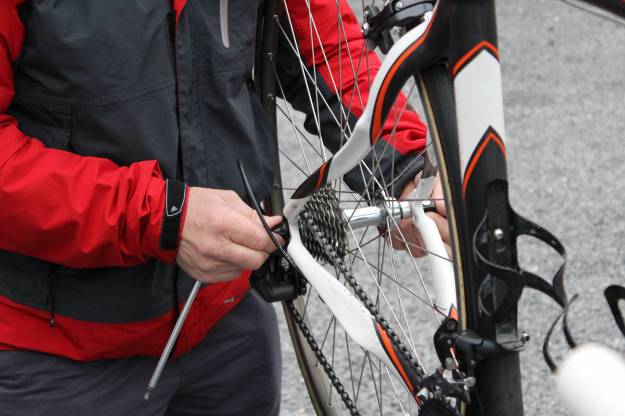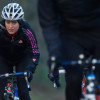One of the most interesting presentations at this year’s International Cyclefit Symposium was from Dr Thomas Korff. Having worked as a Senior Lecturer at Brunel University, London, his research focussed on combining biomechanical and physiological measurements to gain a better understanding of cycling performance and its underlying mechanisms both in children and adults. This presentation focussed on his research conducted by him and Karl Grainger (Lecturer at London Metropolitan University and a doctoral candidate at Brunel) on bike fitting for children and provided some valuable advice for all parents of young riders.
Why is bike fit important for children?
Cycling is an incredibly popular activity for children but a badly fitting bike can easily slow their progress, put them off riding or even lead to injury. They hypothesised that three key fit variables, seat height (bottom bracket to top of saddle), reach (midpoint of saddle to handlebar end of stem) and drop/rise (height difference between saddle and handlebars), could be predicted from simple body measurements.
Why does a child’s fit differ from an adult?
Simply because children are not miniature adults. Their proportion is completely different. For example, in an adult leg length typically accounts for 50% of their total height. For a 1 year old, the proportion is nearer to 30%. Similarly, a 1 year old’s head is 25% of their height but, for an adult, it’s only 10%.
How did they perform the study?
They took 142 children aged between 7-17 years, took a number of body measurements and then fitted them to a specially adapted cycling jig. They modified the seat height if excessive rocking or extremely small joint angles were observed. Both reach and drop were increased or decreased until the subject reported discomfort.
What did they find?
That seat height and reach were predictable from body measurements.
How can I apply this to my child’s bike?
Take these measurements in centimetres:
1) Inseam
Get your child to stand without shoes, with their back against a wall and feet shoulder width apart. Place a small book between the legs, as high as comfortable. Ask the child to move away and measure from the top of the book to the floor.
2) Torso length
From the top of the book, measure to the top of the child’s sternum.
3) Arm length
Ask your child to stand with their arm hanging by their side and to form a fist. Measure from the bony ridge at the top of the shoulder to the knuckle of their index finger.
When you have these measurements, apply them to the following formulae:
Seat height (Bottom Bracket to top of seat) = 0.875 X Inseam
Reach = (0.580 X Arm length) + (0.286 X Torso length) + 10.437
Rise was predicted by arm length and torso length but showed a greater amount of variability. The average rise compared to Inseam length is shown below and provides a good guide for a starting position.
|
Inseam (cm) |
Average rise (cm) |
|
50-59.9 |
23.6 +/- 4.4 |
|
60-69.9 |
10.7 +/- 3.4 |
|
70-79.9 |
7.2 +/- 4.7 |
|
80-89.9 |
5.7 +/- 2.6 |
|
90-99.9 |
1.5 |
Interestingly anecdotal evidence from other delegates at the Symposium who have coached young cyclists backed up reducing rise as riders got older and gained experience. Competitive riders would gravitate towards drop it i.e. bars below the level of the saddle rather than rise.
Just a starting point
As with all bike fits, setting up your child’s bike according to these guidelines is just a starting point. Ask them how the bike feels and adjust it according to their feedback. Don’t just wait for them to grow before you alter their set-up as riding ability and confidence will also affect their bike fit.
You can read the full research paper by Karl Grainger and Dr Korff’s here.
Dr Korff now works as Head of R&D at Frog Bike Ltd.














